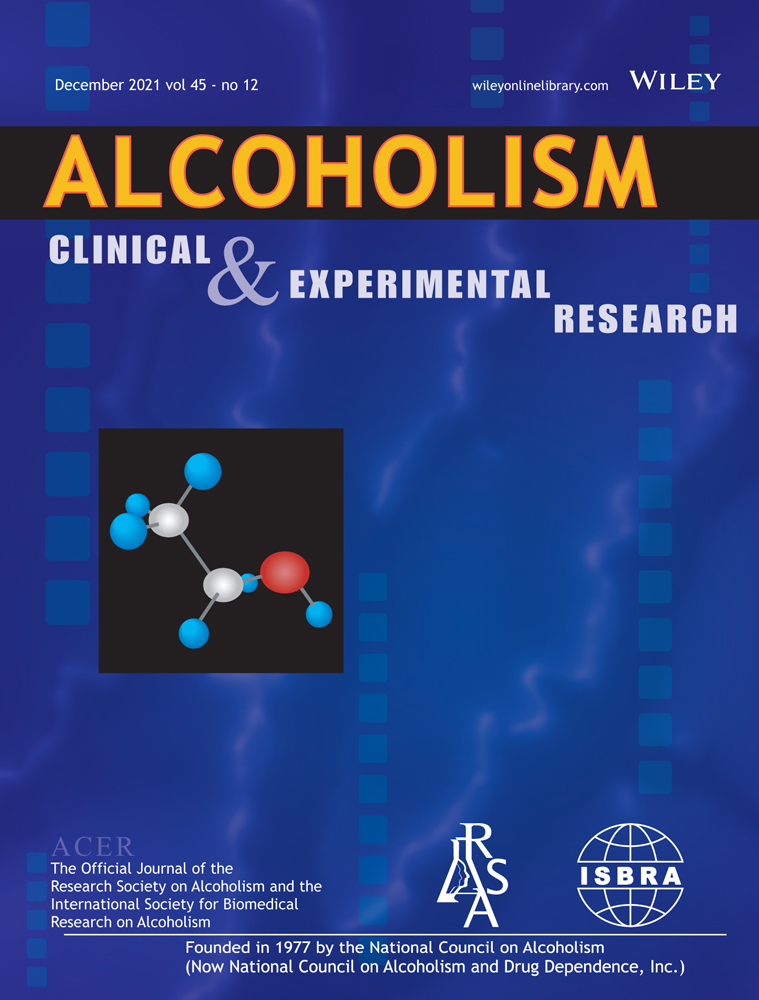The experience of physiological and psychosocial alcohol-related harms across adolescence and its association with alcohol use disorder in early adulthood: A prospective cohort study
Funding information
The APSALS study was funded by a 2010 to 2014 Australian Research Council Discovery Project Grant (DP: 1096668), 2 Australian Rotary Health Mental Health Research Grants, and an NHMRC project grant from 2018 to 2022 (APP1146634). WSY receives PhD scholarships from the Australian Government under the Research Training Program and the National Drug and Alcohol Research Centre. Funding was also received from National Health and Medical Research Council Principal Research Fellowship Grants to RPM (APP1045318), and KK (GNT0188568, APP1041867); National Health and Medical Research Council Early Career Fellowship and NHMRC Investigator Fellowship Grants to AP (APP1109366; APP1174630) and a NHMRC Investigator Fellowship Grant to DH (APP1197488); National Health and Medical Research Council Project Grants to RPM and DH for a Longitudinal Cohorts Research Consortium (GNT1009381 and GNT1064893); a Research Innovation Grant from the Australian Foundation for Alcohol Research and Education; and the National Drug and Alcohol Research Centre, UNSW Sydney, which is supported by funding from the Australian Government under the Drug and Alcohol Program.
Abstract
Background
Different forms of alcohol-related harm (e.g., hangovers, fighting) may confer differential risk of clinically relevant alcohol problems. We examine: (i) patterns of transition in experiencing alcohol-related harms across adolescence; (ii) whether factors in early adolescence predict transition patterns; and (iii) whether transition patterns predict later alcohol use disorder (AUD) symptoms.
Methods
We used a longitudinal Australian cohort (n = 1828) to model latent class transition patterns of alcohol-related harms across three timepoints (Mage = 13.9, 16.8, 18.8 years). Regression models assessed whether child, peer, and parent factors in early adolescence (Mage = 12.9) predicted harms transition patterns and whether these patterns predicted AUD symptoms in early adulthood (Mage = 19.8).
Results
Five transition patterns characterized most of the cohort (n ≈ 1609, 88.0%): (i) minimal harms (n ≈ 381, 20.8%); (ii) late physiological harms (n ≈ 702, 38.4%); (iii) early physiological harms (n ≈ 226, 12.4%); (iv) late all harms (n ≈ 131, 7.2%); and (v) gradual all harms (n ≈ 169, 9.2%). With late physiological harms as the reference, females had increased risk of experiencing early physiological harms (relative risk [RR]: 2.15; 99.5% CI: 1.19, 3.90). Late all harms (RR: 1.71; CI: 1.19, 2.47) and gradual all harms (RR: 1.84; CI: 1.37, 2.47) were each associated with increased odds of meeting criteria for AUD, even when patterns of alcohol consumption are considered.
Conclusions
Adolescents display heterogeneous transition patterns across physiological and psychosocial alcohol-related harms. Females are at greater risk of experiencing early physiological harms. Experience of both physiological and psychosocial harms in late adolescence is an important and potentially modifiable precursor to clinically relevant alcohol problems in early adulthood.
Graphical Abstract
Different forms of alcohol-related harm may confer differential risks of clinically relevant alcohol problems. Using latent transition analyses, our study found that patterns of transition across these forms of alcohol-related harm vary among adolescents as they age. Whilst the majority experienced only physiological harms, such as blackouts, around 20% of the sample also experienced psychosocial harms such as interpersonal conflict. Females were at greater risk of physiological alcohol-related harms. Late adolescent psychosocial harm predicted adulthood alcohol use disorder symptoms.
CONFLICT OF INTEREST
RB has received untied educational grants from Mundipharma and Indivior for studies relating to pharmaceutical opioids. MF has received untied educational grants from the Australian Government Department of Health. AP has received untied educational grants from Mundipharma and Seqirus for postmarketing surveillance of pharmaceutical opioids. These parties had no role in the design, conduct, and reporting of this study. All other authors have no conflicts of interest to declare.





